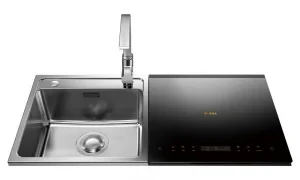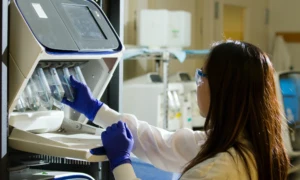Reverse osmosis (RO) is widely used for purifying water. At its core, it is a filtration method that removes impurities from water by forcing it through a semi-permeable membrane. This guide will discuss the basics of reverse osmosis, including how it works, what it’s used for, and some of the benefits it can bring.
What is Reverse Osmosis?
Reverse osmosis is a process where water molecules are forced through a semi-permeable membrane, like Hydranautics CPA7-LD, leaving contaminants behind. This membrane acts like an extremely fine filter, allowing only water molecules to pass through while blocking larger molecules and impurities, including salts, bacteria, and chemicals.
The result is pure water on one side of the membrane and concentrated contaminants on the other. This process is called ‘reverse’ osmosis because it requires pressure to force water across the membrane, against the natural osmotic pressure.
The Importance of Reverse Osmosis
RO is used to provide clean drinking water in places where water sources are contaminated or saline. In industries, it’s used for preparing water for manufacturing processes, pharmaceuticals, food production, and hospitals.
Some of the benefits include:
· Purity: RO can remove up to 99% of water impurities, including dissolved salts, bacteria, and chemicals.
· Taste Improvement: By removing impurities, RO often improves the taste, odor, and appearance of water.
· Energy Efficiency: Modern RO systems are increasingly energy-efficient, making them suitable for home and industrial use.
How Does Reverse Osmosis Work?
The process of RO involves several stages:
1. Pre-filtration: Water first passes through a pre-filter to remove large particles and
2. sediments. This stage protects the RO membrane from damage.
3. Reverse Osmosis Membrane: The pre-filtered water then moves to the RO membrane. Pressure is applied, forcing water through a type of membrane – Hydranautics SANRO HS-4, for example, and leaving impurities behind.
4. Post-filtration and Storage: The purified water is often passed through a post-filter to polish the taste and quality. It’s then stored in a holding tank until needed.
The Role of Pressure
Natural osmosis occurs when water moves from an area of low solute concentration to an area of high solute concentration. In reverse osmosis, pressure is applied to overcome this natural flow and push water from a high-concentration area to a low-concentration area. The required pressure depends on the concentration of impurities in the water and the desired flow rate of purified water.
Considerations and Limitations
While RO is a powerful technology, there are considerations to keep in mind:
· Waste: RO systems produce wastewater containing concentrated impurities. Efficient systems and proper disposal methods are essential to minimize environmental impact.
· Maintenance: Membranes and filters like the Hydranautics CPA7-LD
need regular replacement to keep the system functioning efficiently.
· Mineral Removal: RO can remove beneficial minerals from water. Some systems reintroduce minerals to address this.
Understanding RO Membranes
The heart of any reverse osmosis system is the membrane. Here’s what you need to know:
· Material: Most RO membranes are made from thin-film composite (TFC) material, which offers excellent filtration and durability. Some older systems might use cellulose triacetate (CTA) membranes, which are less tolerant to chlorine but still effective.
· Pore Size: The pores in an RO membrane are incredibly tiny, around 0.0001 microns. To put that in perspective, a human hair is about 50 microns wide.
· Rejection Rate: Membranes are rated by their rejection rate – the percentage of impurities they can remove. High-quality membranes can remove up to 99% of contaminants.
· Maintenance: To maintain efficiency, membranes need regular cleaning and occasional replacement. The lifespan of a membrane depends on the water quality and how well the system is maintained.
Types of RO Membranes
Here are the main types of membranes:
1. Cellulose Triacetate (CTA) Membranes: These are made from cellulose acetate and are known for their chlorine tolerance. However, they are less effective against bacteria and have a shorter lifespan than TFC membranes.
2. Thin Film Composite (TFC) Membranes: TFC membranes, such as Hydranautics SANRO HS-4, are more common in modern systems. They offer superior rejection rates and durability but are less tolerant to chlorine and require pre-treatment of water to prevent damage.
3. Low-Energy Membranes: Designed to operate at lower pressures, these are a more energy-efficient option and are suitable for systems where energy conservation is a priority.
4. Anti-Fouling Membranes: These membranes are specially treated to resist fouling, making them ideal for use with water sources that have high levels of organic material.
Conclusion
Reverse osmosis is a sophisticated technology that plays a crucial role in providing clean, safe water. Whether you’re considering an RO system for your home or just curious about water purification, the principles of reverse osmosis demonstrate the remarkable ability of human ingenuity to harness natural processes to improve our quality of life.








































